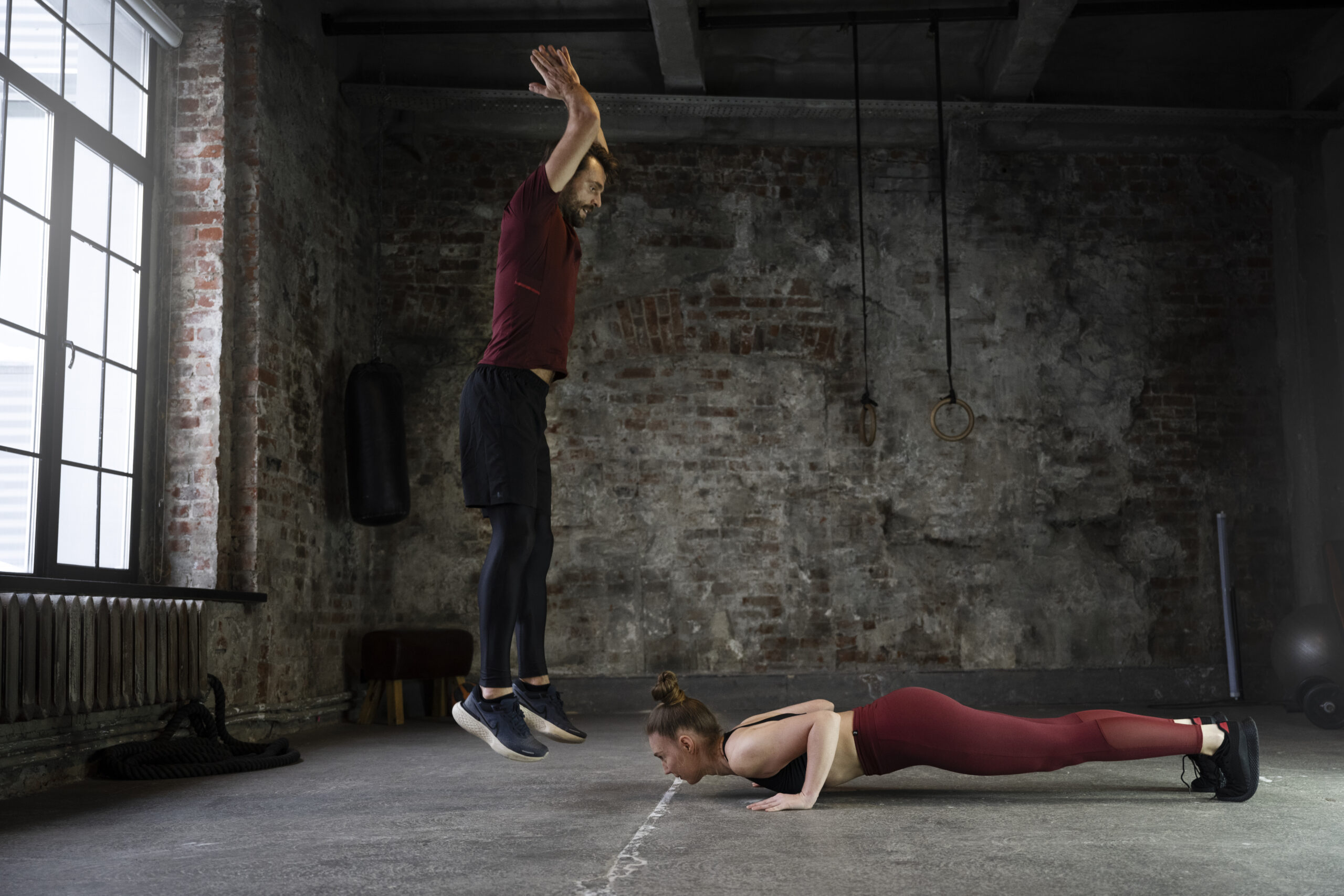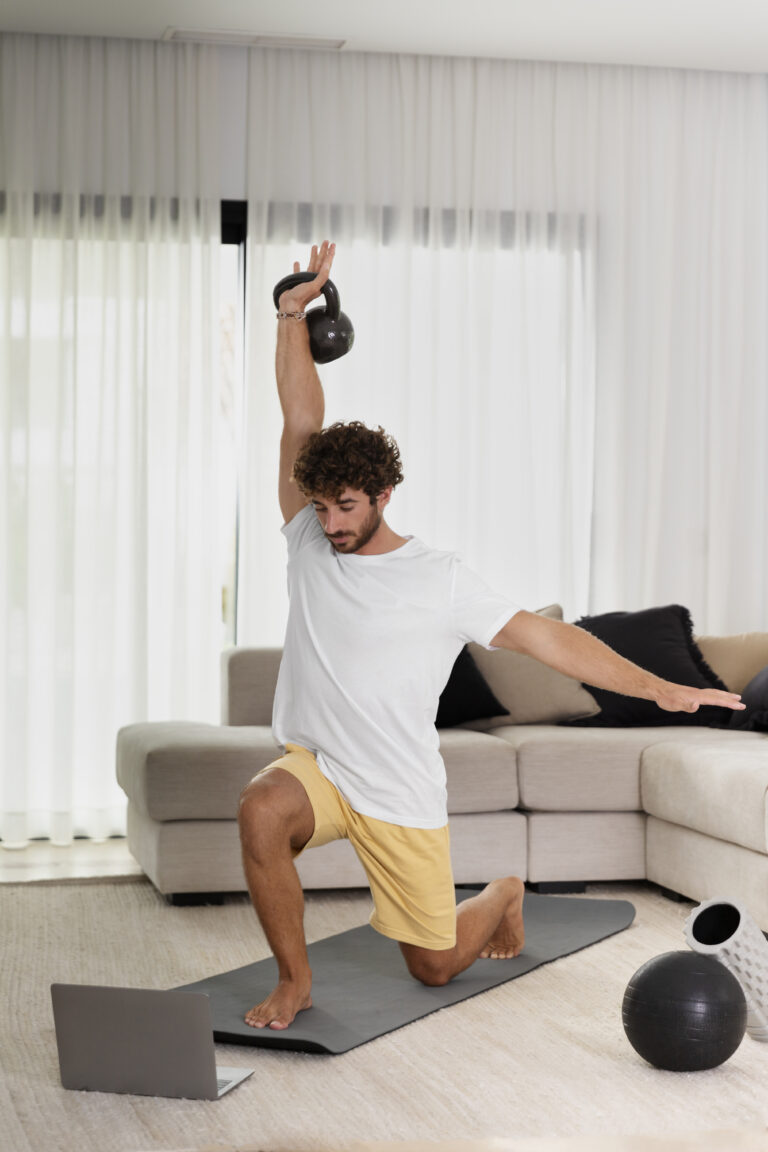Do Home Workouts Actually Build Muscle? Myth vs. Reality
Do Home Workouts Actually Build Muscle? Myth vs. Reality
For many beginners just starting their fitness journey, a common question arises: “Do home workouts actually build muscle?” With social media filled with gym transformations and influencers lifting heavy weights, it’s easy to assume that muscle gain only happens in a fully equipped gym. But is that really the truth?
In this article, we’ll break down the myth vs. reality behind home workouts and muscle growth. You’ll learn the science of how muscles grow, the key principles that matter most (hint: it’s not always about the weights), and practical ways to build strength using just your bodyweight or simple tools at home.
Let’s set the record straight—and get you stronger from the comfort of your living room.
The Muscle-Building Process: What Actually Works
Before answering the question “Do home workouts actually build muscle?”, it’s important to understand how muscle growth (also called hypertrophy) really happens.
Muscles grow when they’re challenged consistently through progressive overload—this means increasing the resistance or difficulty over time. This can be done by:
- Lifting heavier weights
- Doing more reps or sets
- Slowing down your tempo
- Reducing rest time between sets
- Increasing time under tension
In other words, whether you’re at the gym with barbells or doing push-ups at home, the body responds to challenge—not the location. The reality is that you can absolutely build muscle at home, as long as you follow the right strategies.
Myth #1: You Need Heavy Weights to Build Muscle
One of the most common misconceptions is that muscle growth only happens with heavy gym equipment. While resistance is crucial, that doesn’t mean you need dumbbells, machines, or barbells to see progress.
Bodyweight training can build muscle effectively—especially for beginners. Exercises like squats, push-ups, lunges, and planks recruit multiple muscle groups and can be intensified in many creative ways (e.g., adding tempo, holding positions longer, or adding a resistance band).
Reality: Your body is a powerful tool. With smart progression, no-equipment workouts can be just as effective in building lean muscle—especially during your first year of training.
Myth #2: Home Workouts Are Only for Fat Loss or Toning
The phrase “toning” gets thrown around a lot, but in reality, toning means building muscle and losing fat. Some believe that home workouts are good for cardio or weight loss, but not real muscle gain.
That’s simply not true.
With consistency, the right programming, and bodyweight resistance training, you can increase muscle size and strength. In fact, many athletes and calisthenics practitioners build impressive physiques using nothing but home or park workouts.
Reality: With proper structure and intensity, home workouts can transform your body composition—not just help you slim down.
What Home Workouts Actually Need to Build Muscle
If your goal is to grow stronger and build visible muscle at home, here’s what you need to include in your routine:
✅ Progressive Overload (Without Equipment)
- Increase reps week to week
- Add more sets or shorten rest periods
- Try unilateral exercises (like split squats)
- Add resistance bands, a backpack with books, or slower tempos
✅ Train Major Muscle Groups
- Upper Body: Push-ups, shoulder taps, pike push-ups, rows with resistance bands
- Lower Body: Squats, lunges, glute bridges, wall sits
- Core: Planks, leg raises, bicycle crunches
[Link to: Best Dumbbell Exercises for Beginners at Home]
✅ Stick to a Weekly Plan
Don’t wing it. Follow a structured home workout plan that rotates between muscle groups, includes rest days, and tracks progress.
[Link to: Weekly Home Workout Plan for Beginners]
What Slows Down Muscle Growth at Home?
If you’ve tried home workouts before and didn’t see results, these are the most common culprits:
- Lack of Intensity – Not pushing to fatigue or making exercises more challenging.
- Inconsistent Routine – Skipping days, switching routines constantly, or not tracking progress.
- Poor Nutrition – Not eating enough protein or calories to support muscle growth.
- No Recovery – Overtraining without allowing muscles to repair and grow.
Real Results from Home Workouts: What to Expect
Let’s answer it one more time: Do home workouts actually build muscle? Yes—but it depends on the effort you bring. Most beginners can see noticeable muscle development in 8–12 weeks of consistent training with proper nutrition and sleep.
Some benefits include:
- Increased lean muscle
- Better posture and core strength
- Improved functional fitness (real-life movement)
- Boosted confidence and energy
And the best part? You don’t need a gym membership or expensive gear to get started.
Final Verdict: Myth Busted
So, do home workouts actually build muscle? Absolutely. That’s the reality.
The myth that only gym-goers can get stronger is outdated. With smart programming, consistent effort, and basic knowledge of body mechanics, you can build a strong, muscular body from anywhere—your living room, bedroom, or backyard.
If you’re ready to take your first step, follow a structured program that’s made for you. Start slow, challenge your body, and stay consistent.
👉 For the full roadmap to getting fit from home, check out our Ultimate Beginner’s Guide to Home Workouts.







